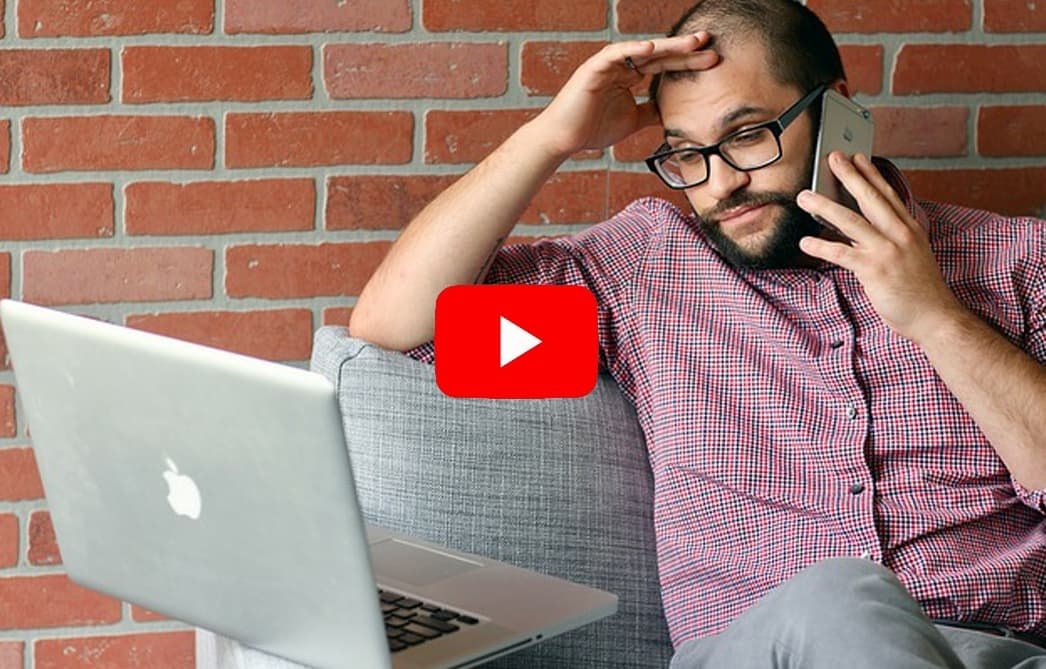Work-Life Balance: Achieving Harmony Between Professional Responsibilities and Personal Well-Being
In today’s hyper-connected, always-on world, maintaining a healthy work-life balance isn’t just a nice-to-have—it’s essential. The lines between professional duties and personal time blur more easily than ever, leading to chronic stress, burnout, and a quiet erosion of joy and purpose. True balance doesn’t come from simply dividing hours; it comes from cultivating a sustainable rhythm that nourishes both your career ambitions and your personal life, allowing you to thrive in all areas simultaneously.
Establishing Boundaries: Protecting Your Time and Energy
At the heart of a balanced life lies clear boundaries. Set specific work hours and stick to them. This isn’t about rigid schedules; it’s about creating a psychological separation between “work mode” and “personal mode.” Establish a dedicated workspace, whether it’s a corner of your home or an office, to anchor your focus during work hours. When the day ends, resist the temptation to check emails or notifications. Disengaging mentally allows the brain to recharge, restores focus, and primes you for the next day with renewed energy.
Prioritization: Focusing on What Truly Matters
Work-life balance isn’t just about time—it’s about attention. Tools like the Eisenhower Matrix can help categorize tasks into urgent vs. important, ensuring your energy is invested in what really counts. Delegating responsibilities and learning to say “no” to low-priority demands protects mental energy and reduces overwhelm. By making deliberate choices about where to focus, you create a structure that aligns both professional and personal goals, fostering a healthier, more sustainable rhythm in your daily life.
Practical Habits: Small Actions, Big Impact
Consistency in daily habits can dramatically ease stress. Schedule regular breaks during work to reset focus and boost productivity. Integrate mindfulness exercises—even a few deep breaths or a short meditation session can reduce anxiety and sharpen clarity. Physical movement, whether a brisk walk, yoga, or a workout, stimulates endorphins, elevates mood, and builds resilience against stress. When combined, these small, intentional practices create a cycle of well-being, reinforcing balance day after day.
Cultivating Self-Compassion: Embrace Imperfection
Balance isn’t perfection—it’s patience and self-kindness. Accept that setbacks are inevitable, and celebrate small wins along the way. Practicing gratitude for both personal and professional achievements nurtures motivation and satisfaction. A mindset of self-compassion transforms the journey of work-life balance from a checklist into a lived experience—one where work and personal pursuits complement each other, creating purpose, joy, and an inner sense of calm that radiates outward.
Conclusion: Harmony in Motion
Achieving work-life balance is not a destination but an ongoing practice. By setting boundaries, prioritizing effectively, integrating mindful habits, and cultivating self-compassion, you create a life where professional responsibilities and personal well-being coexist harmoniously. This balance empowers you to approach both work and life with clarity, energy, and resilience—ultimately transforming stress into a manageable, even enriching, part of the journey.
Meditation for Stress: Harnessing Mindfulness to Cultivate Inner Calm
In an age defined by constant distractions, tight deadlines, and relentless connectivity, meditation has emerged as a vital tool for managing stress, enhancing mental clarity, and fostering emotional resilience. Rooted in centuries-old traditions, meditation has been adapted into accessible techniques that fit seamlessly into modern life—regardless of your schedule, background, or spiritual beliefs. At its core, meditation is about cultivating focused attention, awareness, and presence, providing a powerful counterbalance to the chaos of daily living.
Mindful Breathing: Anchoring Yourself in the Present
One of the most approachable yet transformative practices is mindful breathing. Simply directing attention to each inhale and exhale allows you to anchor yourself firmly in the present moment. This practice slows racing thoughts, calms the nervous system, and sharpens concentration. For beginners, guided sessions—available through apps or online platforms—offer structured frameworks, making it easier to integrate meditation into even the busiest of days.
Body Scan Meditation: Releasing Tension and Reconnecting with Your Body
Body scan meditation directs attention systematically to different areas of the body, fostering relaxation and heightened bodily awareness. By noticing tension and consciously releasing it, individuals can alleviate physical stress while cultivating a deeper sense of embodiment. Particularly during high-stress periods, this technique can provide immediate relief and help create a mindful awareness of the body’s responses to stress.
Loving-Kindness Meditation: Cultivating Compassion and Connection
Beyond physical relaxation, meditation can nurture emotional balance. Loving-kindness meditation (Metta) encourages the cultivation of compassion, warmth, and goodwill toward oneself and others. Regular practice has been shown to improve mood, foster empathy, and strengthen social connectedness, serving as a protective buffer against the emotional toll of stress. This practice reminds us that inner calm is not only about stillness but also about cultivating positive emotional states that ripple outward.
Consistency and Environment: Building a Sustainable Practice
The true benefits of meditation emerge with regular practice. Even a few minutes daily can produce meaningful change; gradually increasing the duration helps cement the habit. Creating a quiet, comfortable space free from distractions enhances focus, while establishing a consistent routine—morning, evening, or midday—signals to your mind that it is time to pause and recalibrate. Over time, meditation can reduce anxiety, improve sleep, and strengthen emotional resilience, empowering you to approach challenges with grace and clarity.
Integrating Meditation into Everyday Life
Meditation is not about perfection or achieving a “blank mind.” It is a gentle, ongoing practice that nurtures self-awareness, emotional intelligence, and self-compassion. By incorporating meditation into daily life, individuals can cultivate a natural state of inner calm, responding to life’s uncertainties with confidence, patience, and equanimity. In essence, meditation transforms the mind into a sanctuary—a space where clarity, balance, and serenity flourish.
🏆 Say Goodbye to Stress: Choose the Right Solution for a Calmer You
Time Management Tips: Master Your Schedule and Reduce Daily Overwhelm
In the whirlwind of modern life, effective time management is not just a skill—it’s a lifeline. Poorly managed time leads to overflowing to-do lists, missed deadlines, and mounting stress. Conversely, a thoughtfully structured schedule—balanced, flexible, and intentional—can create a sense of mastery, reduce anxiety, and carve out space for meaningful work, rest, and self-care. By implementing strategic time management techniques, individuals gain not just control over their days but also clarity, focus, and a renewed sense of purpose.
Prioritization: Focus on What Truly Matters
One of the most powerful strategies for managing time is prioritization. Tools like the Eisenhower Matrix—which categorizes tasks into urgent/important, important/not urgent, urgent/not important, and neither urgent nor important—help determine what requires immediate attention, what can be scheduled, and what can be delegated or eliminated. By focusing on high-impact tasks first, you not only ensure critical responsibilities are handled promptly but also free mental space for long-term goals and personal growth.
Planning Ahead: Structure with Flexibility
Planning ahead is equally vital. Utilizing planners, digital calendars, or task management apps allows for the organization of daily, weekly, and monthly goals. Large projects become manageable when broken into smaller, actionable steps, preventing overwhelm and providing a tangible sense of progress. Regular review and adjustment of plans maintain flexibility, ensuring that unexpected events or new priorities do not derail your overall productivity.
Minimizing Distractions: Protect Your Focus
Distractions are productivity killers. Establishing a dedicated workspace, silencing non-essential notifications, and creating blocks of uninterrupted time for deep work are crucial for maintaining focus. Techniques like the Pomodoro Method—working in 25-minute bursts followed by 5-minute breaks—have proven effective for sustaining mental clarity and avoiding fatigue. Short, frequent pauses throughout the day recharge energy, sharpen concentration, and prevent burnout.
Learning to Say No: Guard Your Time
Equally important is learning to say no assertively. Overcommitting leads to stress, diminished work quality, and personal frustration. Understanding your limits and communicating them clearly preserves mental energy and maintains a balanced schedule. Delegation is another essential tool—entrusting tasks to capable others allows you to focus on activities aligned with your strengths and priorities, cultivating both efficiency and purpose.
Self-Compassion: Patience Amidst Busyness
Time management isn’t about perfection—it’s about sustainable progress. Practicing self-compassion and patience during demanding periods is crucial. Recognize that setbacks are part of the process, celebrate small wins, maintain gratitude, and nurture a positive mindset. These practices reduce frustration, bolster motivation, and reinforce a sense of control over your schedule.
Building a Balanced Routine: Productivity Meets Self-Care
Ultimately, mastering time management means creating a routine that balances productivity with self-care. When individuals control their schedules rather than being controlled by them, stress decreases, mental clarity increases, and fulfillment rises. By approaching each day with intention, presence, and purpose, time management transforms from a task into a foundation for a calmer, more focused, and meaningful life.
🏆 Say Goodbye to Stress: Choose the Right Solution for a Calmer You
YOU MAY ALSO LIKE:
Understanding Stress: The Complete Guide to Managing Your Well-Being
Stress Management Strategies for Better Emotional Well-Being
Why Stress Matters: Understanding Its Impact on Health and Well-Being
The Emotional Journey of Stress: How to Heal and Move Forward
Stress and Your Health: Why Stress Management Matters for Everyone
Stress Reduction Strategies for a Peaceful and Balanced Life
Proven Stress Management Techniques for a Healthier, Balanced Life
Stress and Its Universal Impact: Understanding the Power of Stress on Daily Life
Stress Relief Tips for Everyone: Simple Ways to Create Balance in Daily Life








